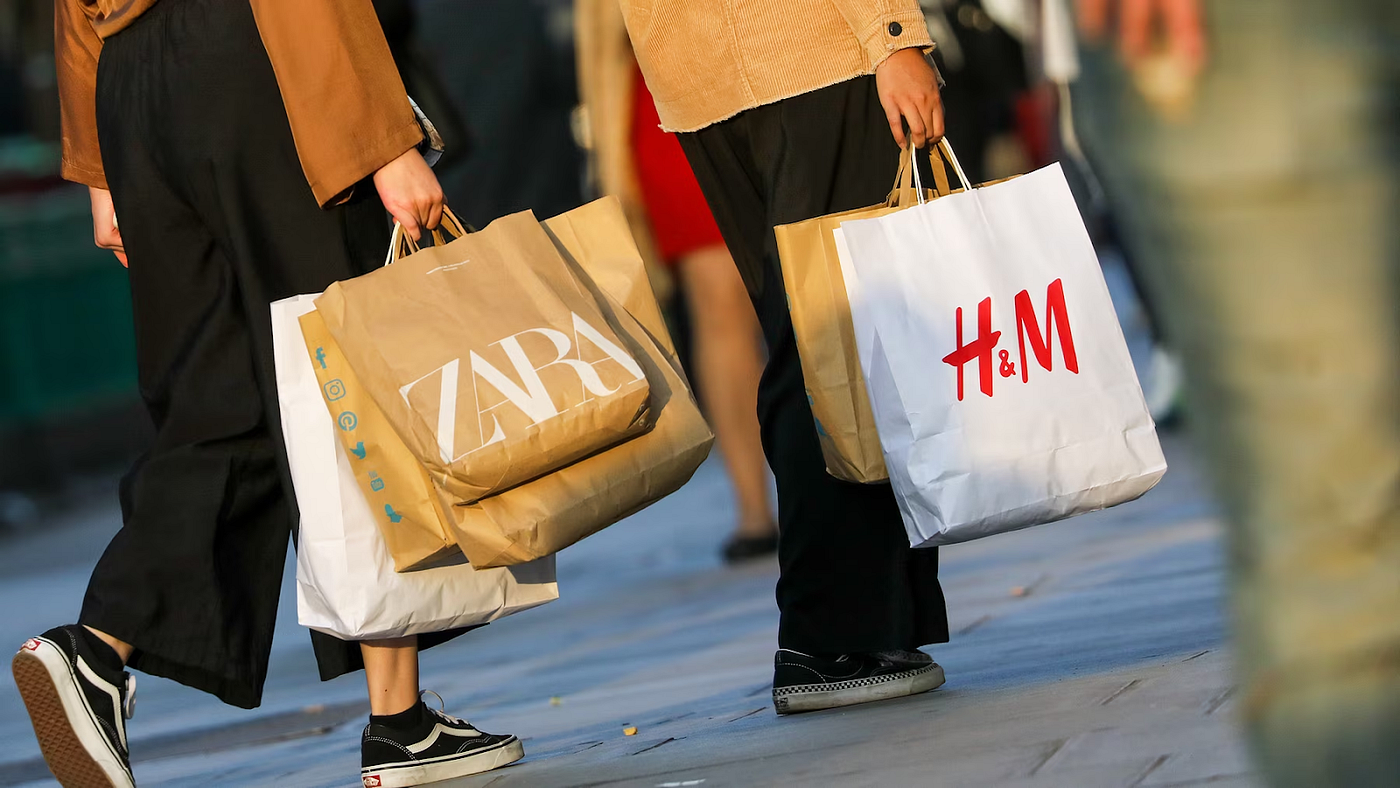A List Of The Worst Fast Fashion Brands To Avoid
Did you know humans are now consuming 400% more clothing compared to 20 years ago? & that the average American generates 82 pounds of textile waste every single year? We are buying more clothes than ever, but we’re wearing them a lot less. We can mainly explain this by the explosive growth fast fashion has known in the past two decades. We want to preface this article by saying this post is meant for consumers who purchase more clothing than they need. We do not want low-income shoppers struggling to purchase from a sustainable brand if fast fashion is the only thing they can afford. However, these fast fashion brands only exist because of overconsumption. It’s about the amount we buy as consumers, and in the States, many of us have more than we need.

5 Top Fast Fashion Brands to Avoid
Shein
With over 20 million followers on Instagram, Chinese brand Shein quickly became popular thanks to social media. It adds 500 products to its website each day, at very cheap prices. Doing this, the brand contributes to the throw-away culture fast fashion brands are promoting, which comes at the cost of the environment. There is no evidence that Shein trying to mitigate its environmental impact. The brand also doesn’t share any information about where its products are made and is very opaque about its supply chain. Shein assures that it doesn’t use forced or child labor and that it offers its workers above-average wages. Yet, it is hard to believe that the company pays its workers fairly, selling products that are so cheap. In 2020, the brand was widely criticized for posting on its website a necklace in the shape of a swastika as well as Islamic prayer mats.
Mango
Mango is a Spanish fashion retailer with a large network of stores in 110 countries. The brand has been making some progress to become more sustainable. It’s producing more and more clothing with organic cotton and recycled polyester, and it has taken steps to eliminate the hazardous chemicals PFCs. While it discloses the precise numbers of its factories’ greenhouse gas emissions, Mango has not yet set a target to lower them. It has also not revealed how it plans to reduce them and has not published a list of its factories. The brand's Code of Conduct reveals that minimum-wage workers are paid the “legal minimum, not the recommended wage level”. Mango should do better and pay its garment workers living wages! The brand also refused to disclose its donation to the fund that was set up to compensate the families of the 1,134 garment workers who died in the Rana Plaza collapse in Bangladesh back in 2013.
H&M
H&M, a famous Swedish brand, is the second-largest fashion retailer in the world, and one we should avoid! In 2018, despite its promises, the company failed to pay 850,000 garment workers a living wage. Many female workers are also physically & sexually abused. H&M hasn’t implemented anything to stop these practices in their suppliers’ factories. The brand was also accused of turning a blind eye to the plight of garment workers who denounced inhumane working conditions leading to the deaths of more than 100 people. Is H&M more sustainable than it is ethical? The brand has made great progress in eliminating harmful chemicals, like PFCs, phthalates, and APs/APEOs from its products. It also has a textile recycling program, but only 35% of clothing gets recycled. The brand should do better to mitigate its environmental impact and reduce its greenhouse gas emissions. Maybe H&M should start by donating its unsold clothes instead of burning them?
Boohoo
British fashion retailer Boohoo has been growing quickly in the past decade. The brand seems to make many promises, but doesn’t do much to improve in the social and environmental spheres. The company states it’s going to disclose in 2021 its factory list and purchasing practices, as well as its social impact strategy to support local communities. We’re still waiting, Boohoo! The Sunday Times recently investigated and found that workers in a Leicester factory were making as little as £3.50 per hour. It's far below the national minimum wage. Workers were also compelled to go to work while being sick with COVID-19, and the company provided barely any protective equipment nor hand sanitizer. The Environmental Audit Committee published a report naming Boohoo as one of the least sustainable fashion brands in the UK. Not surprising for a brand selling so much bad quality clothing!
Forever 21
Forever 21 is an American fashion retailer that sells very cheap clothing, but this comes with a social and environmental cost. On its Social Responsibility page, we can read: “Forever 21 also shares the goal of eliminating child labor and forced labor”. Does it mean that the company still uses these abusive working practices? US Labor Department investigators found that workers at a factory in Los Angeles were paid as little as $4 per hour, much less than the state minimum wage. Forever 21 also refused to sign the Bangladesh Accord on Fire and Building Safety, which shows how much the company cares about its workers. The brand is not transparent about how its products are produced and where. We also do not know if it’s doing something to mitigate its huge environmental impact. Alongside many other scandals, Forever 21 was accused of body-shaming after sending diet bars to customers who ordered plus-size clothing.
